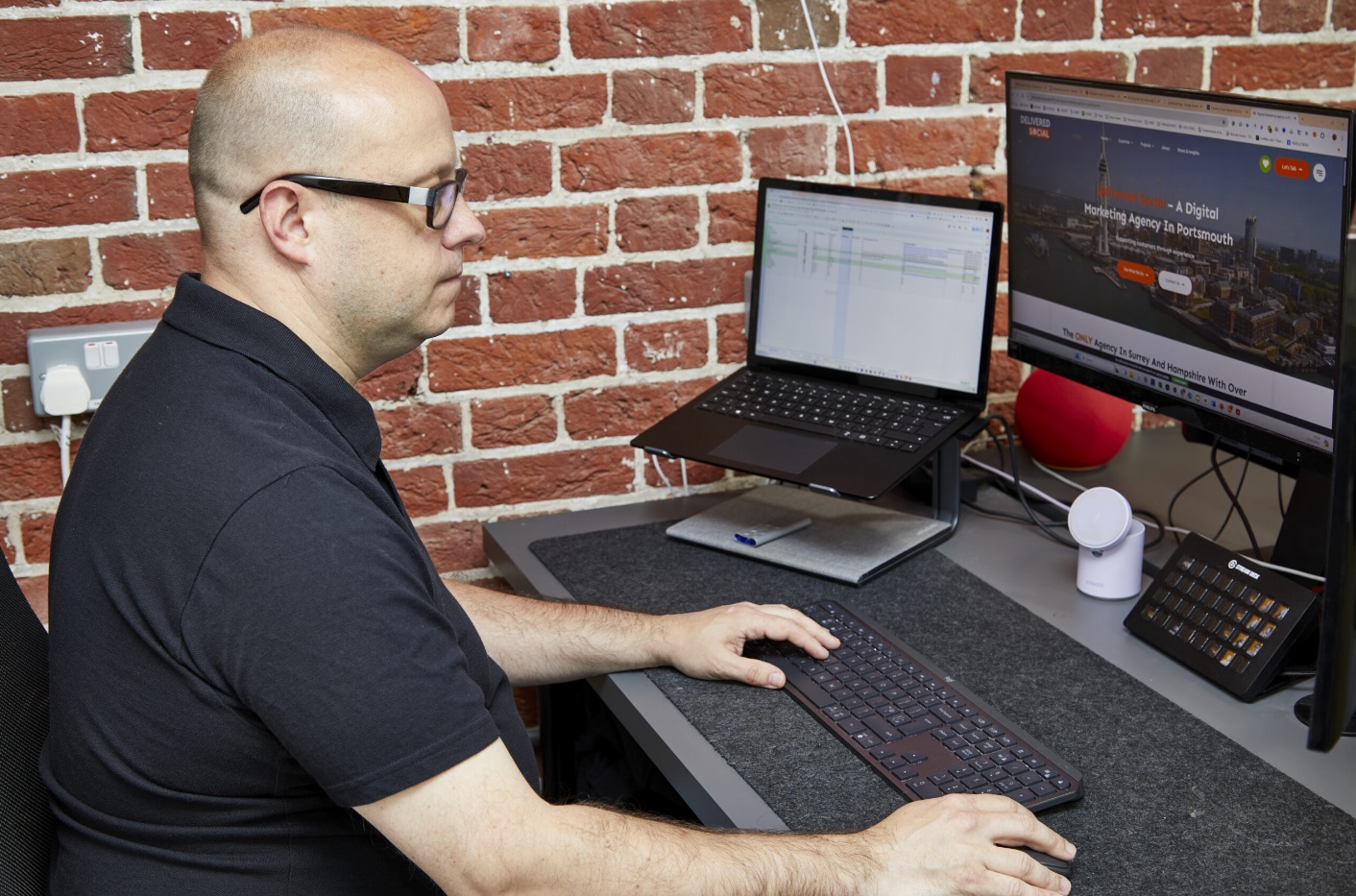
Snapchat continues to be a valuable platform for reaching younger audiences, especially Gen Z and millennials. With new features rolling out in 2025, advertisers need to stay current to get real results. Whether you’re promoting an app, driving traffic to a site, or building brand awareness, understanding how to run Snapchat ads effectively is key. This guide breaks down the process step by step—from setting up your account to choosing the right ad format and tracking performance. If you’re just starting or looking to improve your current campaigns, this article gives you the tools to make smarter decisions with your ad budget.
Understand Snapchat’s Ad Formats
Snapchat offers several ad formats. Each one serves a different purpose. Choosing the right format depends on your campaign goal. Learning how each works is key to knowing how to run Snapchat ads that drive results.
Story Ads appear in the Discover section. These let you place branded content where users explore media and stories. You can use up to 20 images or videos in a single placement. This format works well for brand awareness or product storytelling.
Single Image or Video Ads show between user Stories and content. These take up the full screen and allow swipe-up actions like visiting a site, installing an app, or watching more content. Use this if you want quick engagement with clear calls to action.
Collection Ads display four tappable product tiles under a video ad. This format helps showcase multiple products at once, making it useful for eCommerce campaigns focused on conversions.
AR Lenses offer interactive experiences using augmented reality features through the camera screen. Users can play with branded filters or animations directly in their environment. These ads help increase interaction time and boost recall rates.
Commercials run within curated shows on Snapchat Discover and can’t be skipped for six seconds, though they may last up to three minutes total. These suit brands looking for guaranteed views during premium content sessions.
Filters let users decorate Snaps with your custom design after taking photos or videos in specific locations or during set times. These support local promotions or event-based marketing strategies.
Understanding these options helps you link goals with delivery methods effectively. Whether you’re aiming for clicks, installs, sales, or reach—each format supports different outcomes based on how users interact with them inside the app experience.
Knowing what each type does allows better planning before launch so you avoid mismatched formats that don’t serve your advertising purpose efficiently.

Set Up a Business Account on Snapchat Ads Manager
Start by going to the Snapchat Ads Manager website. Click on “Create an Account.” Use your business email and create a secure password. After signing up, fill in your business name, country, and currency. This information helps Snapchat tailor your account settings.
Once inside the dashboard, you’ll see sections for campaign setup, performance tracking, billing, and audience tools. The Ads Manager is where you build every ad and track how it performs over time. It’s also where you control budgets and set goals for each campaign.
Connect your business details next. Add a payment method under the billing section so you’re ready to launch ads when needed. You can use credit cards or other approved options depending on your region.
Link a public profile if available. This step allows users to view more of your content after they engage with an ad. A connected profile improves user interaction by offering extra brand touchpoints beyond just one ad.
Use the Business Details tab to add key information like phone number or website URL. These fields support trust and help with ad approvals later on.
Inside Ads Manager, explore tools that let you define target groups based on age, interests, location, or device type. These filters help you reach people who match what you’re offering.
Understanding how to run Snapchat ads starts here—with proper setup in Ads Manager. Without this step done right, future campaigns may face issues during review or delivery stages.
Complete all required fields before moving forward with any creative uploads or budget planning steps in future parts of the process.
Define Your Target Audience
Start by knowing who you want to reach. Snapchat offers tools that help you focus on the right users. You can select your audience based on age, gender, language, and device type. These filters help make sure your ads appear in front of people more likely to care about what you’re offering.
Next, use interest categories to go deeper. Snapchat tracks what users engage with across the app. This includes content they watch and topics they follow. You can choose from a wide range of interests like fitness, travel, gaming, or fashion. Matching these interests with your product helps improve ad performance.
Snapchat also allows behavior targeting. This lets you reach users based on how they act inside the platform. For example, if someone often shops through Snap ads or uses certain features frequently, you can target them directly. These habits give strong signals about buying intent.
Location is another tool that adds value to your targeting setup. You can run campaigns focused on specific areas — countries, cities, zip codes, or even custom locations like store addresses or event venues. This works well for local businesses trying to drive foot traffic or brands aiming at regional markets.
You can also upload customer lists using email addresses or phone numbers if you already have user data from other platforms or past sales channels. Snapchat matches this data with its own user base so you can reconnect with those same people through ads.
For those learning how to run Snapchat ads, understanding audience options is key before spending any budget. Using these features together increases relevance and lowers wasted impressions across campaigns.
Experimenting with combinations of demographics and behaviors will help fine-tune results over time without stretching costs unnecessarily. Keep tracking how each group performs so future decisions rely on real outcomes instead of guesses or assumptions.
Learn How to Run Snapchat Ads Effectively
Start by setting a clear goal. Decide what you want your Snapchat ad to do. This could be getting more visits to your website, increasing app downloads, or raising awareness for a product. A specific goal helps guide every step of the campaign.
Next, choose the right type of ad. Snapchat offers several formats: single image or video ads, story ads, collection ads, and dynamic product ads. Each format serves different purposes. For example, use story ads if you want people to swipe through multiple screens. Use collection ads when showing products with direct links makes sense.
Create content that matches the platform’s style. Your visuals should look natural in someone’s feed but still grab attention quickly. Make sure your message shows up within the first few seconds of the video or image. Keep text short and easy to read on mobile screens.
Add a clear call-to-action (CTA). Tell users exactly what they should do next—like “Swipe Up,” “Install Now,” or “Watch More.” The CTA must match your original campaign goal.
Use real-time data tools inside Snapchat Ads Manager to track how well your content is doing. Look at metrics like swipe-up rate, view time, and cost per result regularly. If something isn’t working well—change it fast.
Test different versions of your ad creative and copy through A/B testing features available on the platform. Try new headlines or images until you find what works best for your audience segment.
Knowing how to run snapchat ads means using every part of this process with purpose—from planning and design to tracking performance and making smart changes along the way. Results come from small improvements made often using reliable data over guesses or assumptions about user behavior.
Create Engaging Ad Creative That Converts
Snapchat users scroll fast. To stop that scroll, your content must grab attention within the first second. Start with vertical formats only. Snapchat is built for phones, so horizontal videos or wide images won’t perform well. Always use full-screen visuals that fill the screen from top to bottom.
Design short clips or static graphics that show your message right away. Avoid slow builds or long intros. Use bold text overlays to highlight offers, features, or calls to action early in the video or image. Keep words minimal and readable on a small screen.
Speak directly to Gen Z and Millennials by using styles they recognise. This means casual language, trending sounds, popular slang (used carefully), and real-life situations they relate to. Avoid polished studio shots unless they support a clear point. Raw footage often works better if it feels natural but still communicates value.
Use motion where possible—moving text, quick cuts, animated effects—to keep viewers watching longer. Include captions since many people watch without sound enabled. Make sure your message is clear even when muted.
Test different creative types: user-generated content (UGC), product demos, behind-the-scenes looks, or testimonials all serve different goals depending on what you’re selling. Track which ones lead to more swipes up or conversions so you can adjust over time.
Mobile-first storytelling matters here more than on most platforms. Think about how your story flows in under 10 seconds without needing background info beforehand.
To fully understand how to run Snapchat ads, strong creative is not optional—it’s required for results. Every frame should drive interest and move someone closer to taking action like visiting a landing page or installing an app.
Try variations of each concept with changes in color schemes, angles, music tracks, and voiceovers—or no voiceover at all—then monitor engagement closely using Snapchat Ads Manager tools like Swipe Up rate and Pixel tracking data for performance insights that guide future designs.
Set Your Budget and Bidding Strategy
Start by choosing how much money you want to spend. Snapchat lets you pick between a daily budget or a lifetime budget. A daily budget spreads your spend evenly across each day. A lifetime budget spends your total amount over the full length of the campaign. Select one based on how long your ad will run and how flexible you want to be with spending.
After setting the budget, pick a bidding method that fits your objective. If you’re focused on visibility, set up bidding for impressions. This option works if you want more people to see your ad without needing them to take action. For campaigns that aim to drive actions like swipe-ups, choose swipe-up bidding. This helps bring users directly to a landing page or app store link.
If conversions matter most—like purchases or signups—then use conversion bidding. Snapchat uses its system to show ads to users who are likely to complete those actions. To make conversion tracking possible, install the Snap Pixel on your site or use in-app event tracking for mobile apps.
Snapchat also offers Auto-Bid and Max Bid options. Auto-Bid adjusts automatically so you get the best results within your set cost limit. Max Bid allows more control by letting you define exactly what you’re willing to pay per result.
Decide what matters most—views, clicks, or completed goals—and shape both your bid type and spend around that focus area.
Understanding how to run Snapchat ads includes knowing where every dollar goes and why it’s being spent there. A clear plan helps avoid wasted funds while keeping performance aligned with real outcomes like traffic growth or sales increases.
Test different combinations of budgets and bids over time so you can improve results as campaigns continue running across days or weeks without needing constant changes mid-flight.

Monitor Performance and Optimise Campaigns
Tracking how your Snapchat ads perform is a key part of improving your results. Start by checking the Ads Manager dashboard often. Look at data points like swipe-up rate, cost per conversion, and impressions. These numbers help you understand what’s working and where changes are needed.
Swipe-up rate shows how many users engaged with your ad by swiping up. If this number is low, the creative may not be clear or appealing enough to drive action. Cost per conversion tells you how much you’re paying for each result—whether it’s a sign-up, purchase, or other goal. A high cost here could mean poor targeting or an offer that doesn’t connect well with viewers.
Use A/B testing to compare different versions of your ad. Change one element at a time—such as the image, headline, or call-to-action—and track which version performs better. This method helps remove guesswork and gives direct feedback on what drives better engagement.
Also review performance across different audience groups. You might find some age ranges convert more than others or that certain interests lead to cheaper results. Adjust targeting based on these findings to focus spend where returns are stronger.
Another way to optimize is by rotating creatives regularly. If users see the same ad too often, they may ignore it completely over time—a problem known as “ad fatigue.” Upload fresh content every few weeks to keep attention high and maintain click-through rates.
Learning how to run Snapchat ads includes knowing when campaigns need updates based on real-time data. Use insights from past runs to guide each next step instead of relying on assumptions alone.
Making small changes based on performance can shift underperforming ads into stronger ones over time. Keep testing new formats and adjusting bids if needed until you reach consistent results that meet your goals efficiently.
Mastering the Snapchat Ad Landscape for Maximum ROI
Now that you understand the essentials, you’re ready to take full advantage of Snapchat’s powerful advertising platform. From selecting the right ad format and setting up your business account to defining your audience and optimising campaigns, each step plays a critical role in driving performance. Knowing how to run Snapchat ads effectively means combining creative strategy with data-driven decisions to reach and convert your ideal customers. As 2025 brings new opportunities in mobile-first marketing, staying agile and informed will help you stay ahead of the curve—and maximise every ad dollar spent on Snapchat.
Interested In Working Together?
Introducing Delivered Social. We’re The Most-Rated Digital Agency In Surrey & Hampshire – We’ve Got To Be Doing Something Right.
Delivered Social is a digital marketing agency with one mission—to help businesses grow. We’re famous in Guildford and Portsmouth for our social clinics. We believe in free advice. We build lasting relationships because our team prides itself on being helpful, which our clients appreciate.
If you are looking for a new website or an agency to manage your social media presence, we can help.
If you need something slightly different, here's a super handy list of all our services, or you can always email us.























